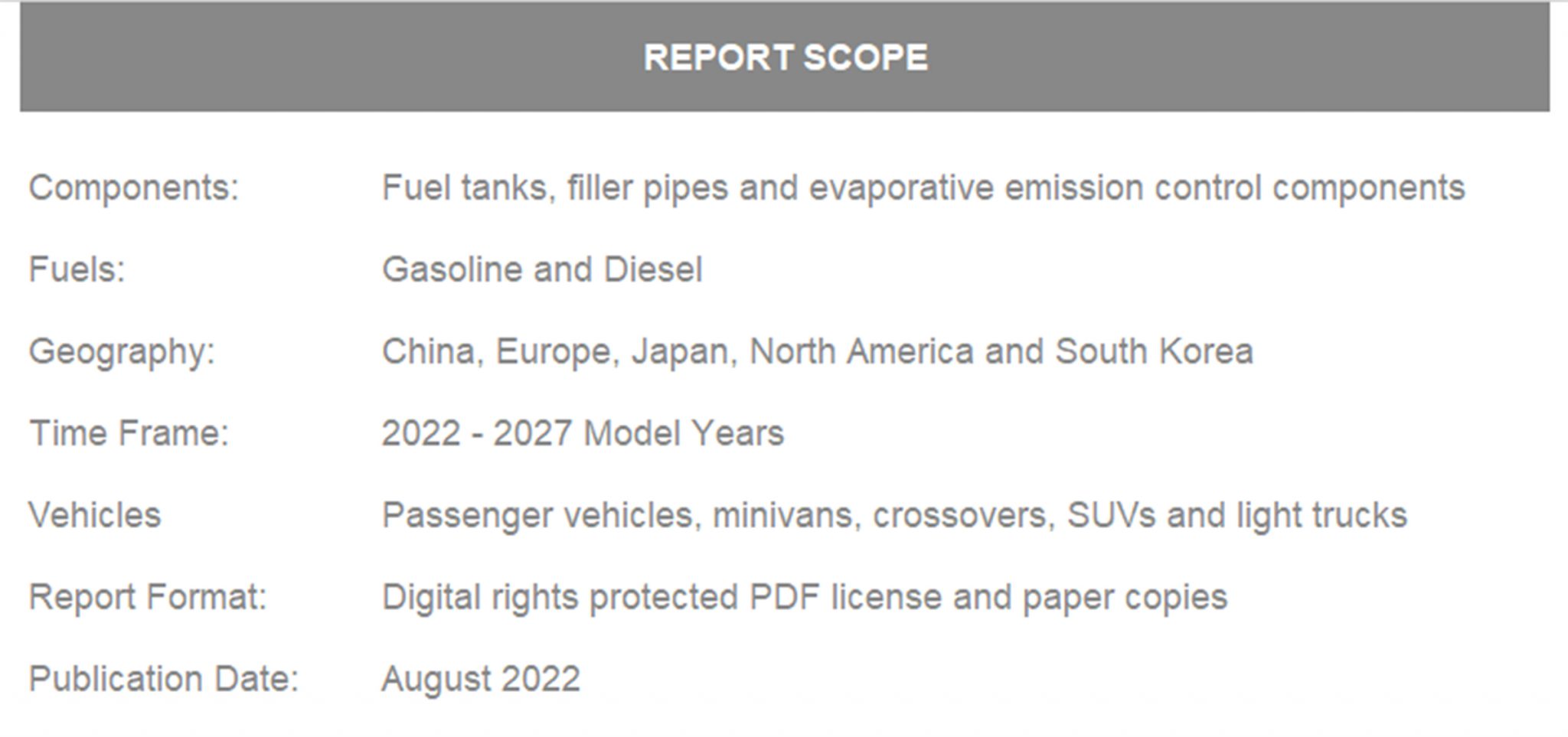- Home
- Industry Reports
- Automotive Fuel Systems 2022
Automotive Fuel Systems 2022
2022 Update Report

The years 2020 and 2021 are likely to be remembered as pivotal years for the global automotive industry. Despite the continuing uncertainty resulting from the global pandemic, global OEMs increased their efforts and investments in the move towards electrified vehicles. At COP26 in Glasgow, Ford, Mercedes-Benz, General Motors and Volvo all agreed that they would work towards reaching 100 percent zero emission vehicles by 2035 or earlier, whereas a number of OEMs including Hyundai-Kia, Renault- Nissan, Stellantis, Toyota and Volkswagen did not sign onto this target. As a result, the rate of the move towards electrified vehicles is still uncertain. The predicament of the major automotive OEMs was aptly described by the Financial Times in early December 2021 in response to Nissan’s CEO Mokoto Uchida’s announcement of Nissan’s $18 billion investment in electrification:
“Uchida’s promise of imminent technological wizardry might lead the customer to conclude that nothing currently in Nissan’s showrooms is truly cutting edge. That means, from the most junior dealer to the CEO, Nissan is placed in a position of earnestly selling placeholders, while believing most fervently in a car that does not yet exist.”
For participants in the traditional automotive fuel systems’ market, the uncertainties surrounding the moves to vehicle electrification make proper business planning tough. One fact is obvious: the fully global utilization of battery electric light-duty vehicles will be impossible to fully accomplish anytime in the next few decades. Therefore, traditional fuel systems will continue to be used on a great number of vehicles, albeit with tighter emission controls.
Over the next five to eight years, government regulations will continue to tighten for exhaust, evaporative and carbon dioxide emissions. Euro 7 has been eagerly awaited by those involved in fuel storage and delivery since the new regulations are expected to have a major impact on current systems in Europe. In the USA, regulatory developments are expected under the current administration while in China, the industry is looking towards drafts of China 7. Technical challenges will continue to evolve together with exciting new innovations while the pressures of cost reduction persist.
ITB’s 2022 report will cover fuel systems for traditional ICE and hybrid powertrains and will account for the impacts of both changes to evaporative emissions and exhaust emissions on fuel system components. Market developments including supplier structural changes and supply shifts will also be included.





